Home
CRAVEzero Final Report
About
The EU-Horizon 2020 project CRAVEzero focuses on proven and new approaches to reduce costs and improve nZEBs at all stages of the life cycle. The main goal is to identify and eliminate the extra costs for nZEBs related to inefficient processes and technologies and to promote innovative business models taking into account the cost-effectiveness for all the stakeholders.
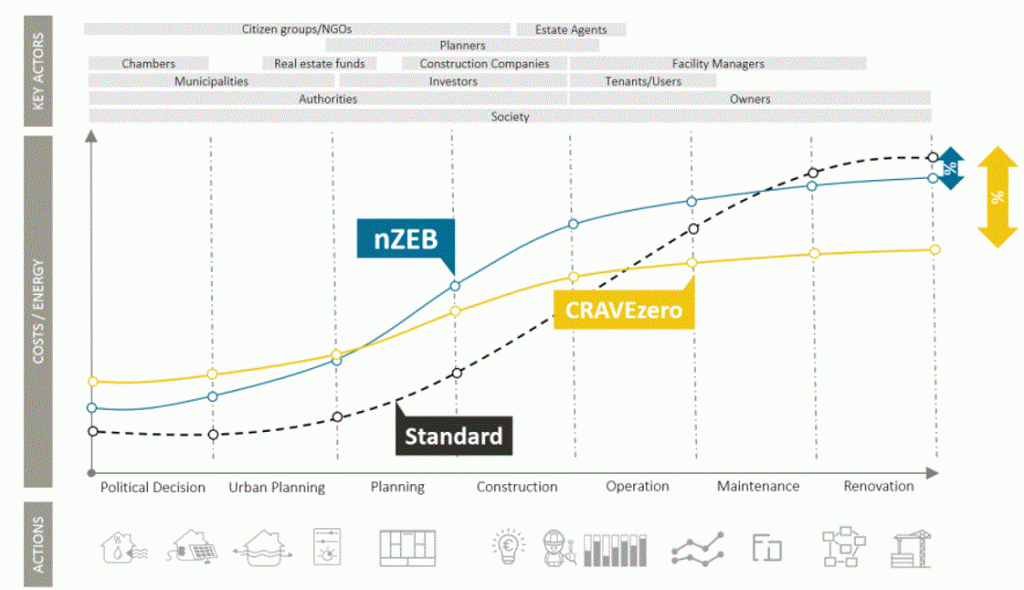
Figure: Cravezero Approach
Cost reduction potentials are to be found in all life- cycle phases of nZEBs – from urban planning, to building design, construction and building operation. Also, it is necessary to consider indirect co-benefits such as architectural quality, indoor environmental and comfort improvements and health aspects. The high complexity of nZEBs both in a technical way as well as difficulties in planning, construction and operation processes, are the main reasons why nZEBs fail to achieve performance and costs targets. Already from the very beginning, prerequisites must be created to define the requirements and clear project objectives. Too often, promising building concepts fail to achieve costs and energy goals, because project participants are not sufficiently aware of the manifold interactions of holistic planning contexts.
The idea of “CRAVEzero” is to promote a well organized and transparent interdisciplinary process along the whole life cycle of a nZEB, focussing both on environmental and economic aspects .
To minimize risks and possible bottlenecks, obstacles must be identified at an early stage. It is necessary to establish a common planning understanding for nZEBs among all actors early on. The design of new nZEBs begins with maximizing passive design, yet limiting energy consumption from the grid. To do this, planners often need to challenge the norms of traditional designs.
Each building has its
unique process, where architects often start from scratch, collect the
information and constraints of the local context, develop the building, carry
out cost-optimal performance analyses, hopefully include an evaluation of the
potential for using renewable energy. This means extra time and planning costs
for the design process. Stakeholders repeat almost the same procedures without
a coordinated and standardized process. As a starting point, a systematic
approach for the life cycle process of low-cost nZEBs is needed. A clear
connection between the building performances and the related costs is essential
for ensuring the clarity of the process. A strategic element in the whole
process is the introduction of a performance-based procurement approach as a common
practice not only for public tendering but also for private construction.
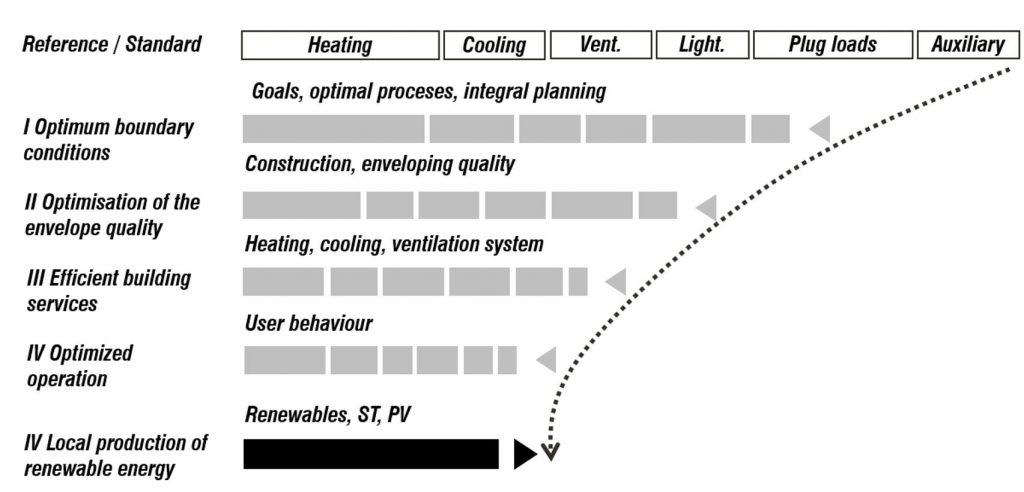
Figure: Process steps to reach nZEB-standard along life cycle phases
Cost reduction and marked acceleration for nZEBs have been achieved using the following guiding principles, established by the CRAVEzero consortium:
- Define energy and related project goals.
- Define actions to reach the goals and track them throughout the life cycle.
- Create win-win situations for all stakeholders.
- Select optimal nZEB technical solution sets.
- Do life cycle cost analysis and variants.
- Quantify co-benefits for nZEBs.
- Learn from frontrunners and avoid pitfalls and bottlenecks.
- Bring all together in the business case for nZEBs.

The CRAVEzero Framework
nZEB-design is a multi-objective challenge where stakeholder interests’ often conflict with each other. The aim of the “CRAVEzero framework” is to provide knowledge to more confidence for decisions to reach nZEB goals ant their relation to energy and cost performance.
The main targets pursued in the project can be summarized as follows:
❶ The reduction of construction-related costs compared to the current cost of a new conventional building that meets current building regulations.
❷ The nearly zero (or beyond) energy consumption (including on-site or nearby renewable energy sources) and nearly zero impact of materials used over the whole life cycle.
❸ The co-benefits such as increased real estate value and working environment quality.
❹ The cost-effectiveness of the investment from a business model point of view.
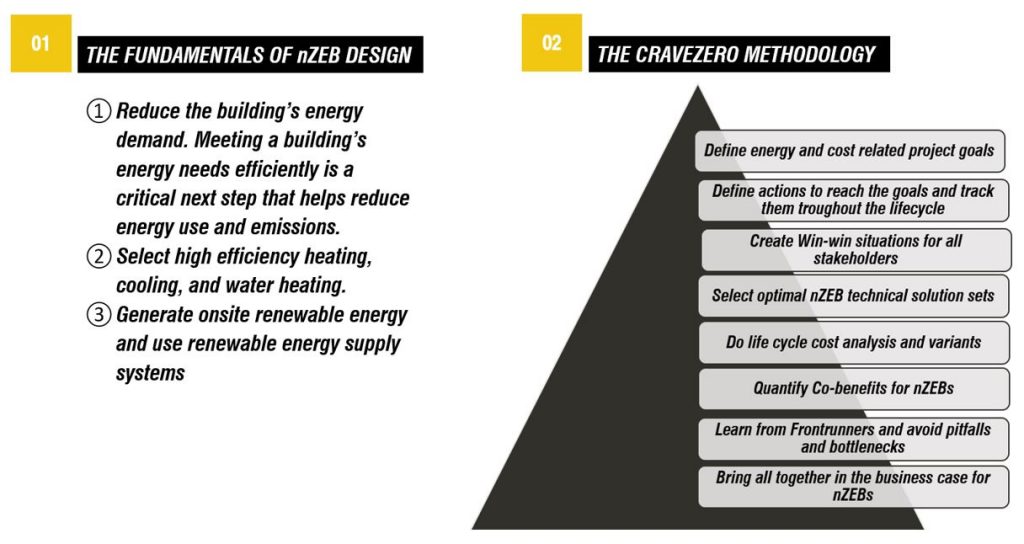
THE FUNDAMENTALS OF nZEB DESIGN
- Reduce the building’s energy demand. Meeting a building’s energy needs efficiently is a critical next step that helps reduce energy use and emissions.
- Select high efficiency heating, cooling, and water heating.
- Generate onsite renewable energy and use renewable energy supply systems.
THE CRAVEZERO FRAMEWORK
- Define energy and related project goals.
- Define actions to reach the goals and track them throughout the life cycle.
- Create win-win situations for all stakeholder.
- Select optimal nZEB technical solution sets.
- Do life cycle cost analysis and variants.
- Quantify co-benefits for nZEBs.
- Learn from frontrunners and avoid pitfalls and bottlenecks.
- Bring all together in the business case for nZEBs.
Interactive parametric nZEB life cycle cost and energy dashboard
The CRAVEzero interactive parametric nZEB life cycle cost and energy dashboard is now online and free to use: https://lnkd.in/dyiYZVQ Lessons learned from 13+ nearly zero energy buildings from all over Europe. #energytransition#nzeb#dashboard#h2020#buildings#lifecycle#buildings#solar#cleanenergy
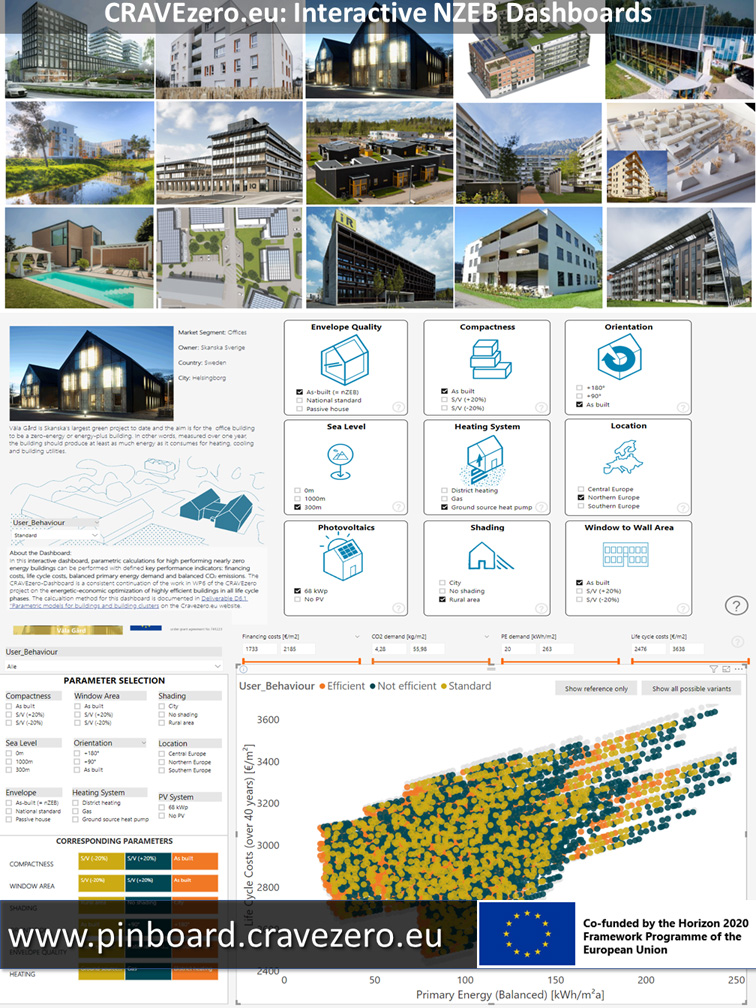
CRAVEzero methodology
For the practical implementation, the proposed CRAVEzero methodology, which is an addition to the fundamentals of nZEB designs (nZEBs as a purely technical concept) aims at reaching nZEB targets in eight major steps:
① Define energy and cost-related project goals
It is important to clearly define energy consumption and life cycle cost-related goals for the project in the first step. This step lays the foundation for defining key actions needed to achieve those goals, avoiding pitfalls and bottlenecks.
② Define actions to reach the goals and track them throughout the life cycle
Considering the complexity to reach nZEB-target with cost-optimal solutions for all the different stakeholders, multiple actions are required. However, these are usually missing in standard planning processes. Therefore, it is important to promote a shared, interdisciplinary understanding of the complexity of nZEB planning processes for all involved stakeholders. A well-organized and transparent process is a key issue of achieving the goal of cost-optimal and sustainable nZEBs throughout the entire life cycle. The CRAVEzero consortium, which provided its experience in the area of holistic project management with a focus on integral building planning, defined how key performance parameters, to achieve successful nZEBs, should be prioritized and can be tracked along the whole life cycle process. Additional advantages of this approach are:
- Risk reduction.
- Speed-up of construction and delivery.
- Control over costs and energy performance.
- Foster integrative design and make optimal use of team members’ expertise.
- Establishment of measurable success criteria.
③ Create win-win situations for all stakeholders
A win-win situation for the involved stakeholders needs to be created to push and support the nZEB market uptake. To do that, a win-win situation has to be translated into a business model.
Business models are usually based on cooperative strategies, where different stakeholders bundle their expertise to create positive outcomes for all processes, creating synergies and ‘win-win’ situations. Already existing and new examples for ‘Win-win-win’[AK1] nZEB business models have been analyzed during CRAVEzero project, showing advantages to different types of stakeholders, for example, planners, developers, construction companies and users, while positively contributing to the environment and society.
④ Select optimal nZEB technical solution sets
To realize cost-efficient nZEBs for all stakeholders throughout the life cycle, knowledge about the most important technology sets as well as possible cost developments of these technologies is essential.
The development of comprehensive solution-sets based on key industrialized components and renewable energy systems and its cost-effective integration in the design and construction process are major challenges. The CRAVEzero approach has identified technical and life cycle cost reduction potentials for each nZEB technology set to define robust solution sets based on industrialized multifunctional building components, easy and flexible to produce, install, and maintain.
⑤ Do life cycle cost analysis and variants
According to the ISO 15686-5:2008, the life cycle costing of a building is the net present value, which is the sum of the discounted costs and revenue streams during the phases of the selected period of the life cycle[AK2] . The life cycle phases generally included in the assessment are the cost for the initial investment (design and construction), the cost for operation and maintenance and the end-of-life residual value.
The implementation of LCC in the design phase allows moving the focus away from the initial investment perspective, including operation, maintenance and end-of-life stages as well. The advantages are that this methodology gives transparency to the operational phase of a building, awareness of total costs and the possibility to adjust these total costs already in the design phase. This approach leads to better determine the optimal solution-set from a cost-effectiveness point of view over a selected life cycle and allows:
- Balancing the cost of ownership and occupation, analyzing initial investment and running cost,
- Assessing risk and costs connected to maintenance and replacement due to failure,
- Supporting decisions, which consider sustainability.
Furthermore, LCC calculation can be adopted to compare building variants, alternative technology sets or mutually replaceable design alternatives as well. This approach allows selecting the most cost-effective solution, undertaking financial options evaluation. In this way LCC analysis becomes a tool that supports the decision making process.
This is illustrated in report: “Spreadsheet of LCC”.
⑥ Quantify co-benefits for nZEBs
It is essential to quantify the added value associated with green buildings and their impact on life cycle costs. Co-benefits such as increased productivity, improved health, publicity value, higher renting opportunities, reduced employee turnover and reduced absenteeism need to be quantified. The objective is to present new business advantages and opportunities to potential investors, going beyond technical performance analysis.
See report: “Framework for co-benefit analysis” covers the co-benefit analysis.
⑦ Learn from frontrunners and avoid pitfalls and bottlenecks
Cost and time are often overrun when constructing nearly-zero and plus energy buildings, due to unclear requirements, unclear processes and the lack of knowledge about these technologies. CRAVEzero project showcases frontrunner nZEB projects, which have been realized in a cost-efficient way, so that pitfalls and bottlenecks can be avoided in future projects.
⑧ Bring all together in the business case for nZEBs
The goal was to develop an effective methodology to achieve the best conditions towards cost optimal nZEBs, exploring the concept of integrating nZEB technologies and business models in the whole planning, construction and operation process. The evaluation and generation of enhanced and innovative business models are also part of the study of nZEBs. To generate new business models, it is necessary to identify what types of different business models already exist in the markets and what makes them successful or inconsistent.
CRAVEzero Pinboard
An interactive web-based structured framework to build effective low life cycle cost nearly zero energy buildings. http://pinboard.cravezero.eu/
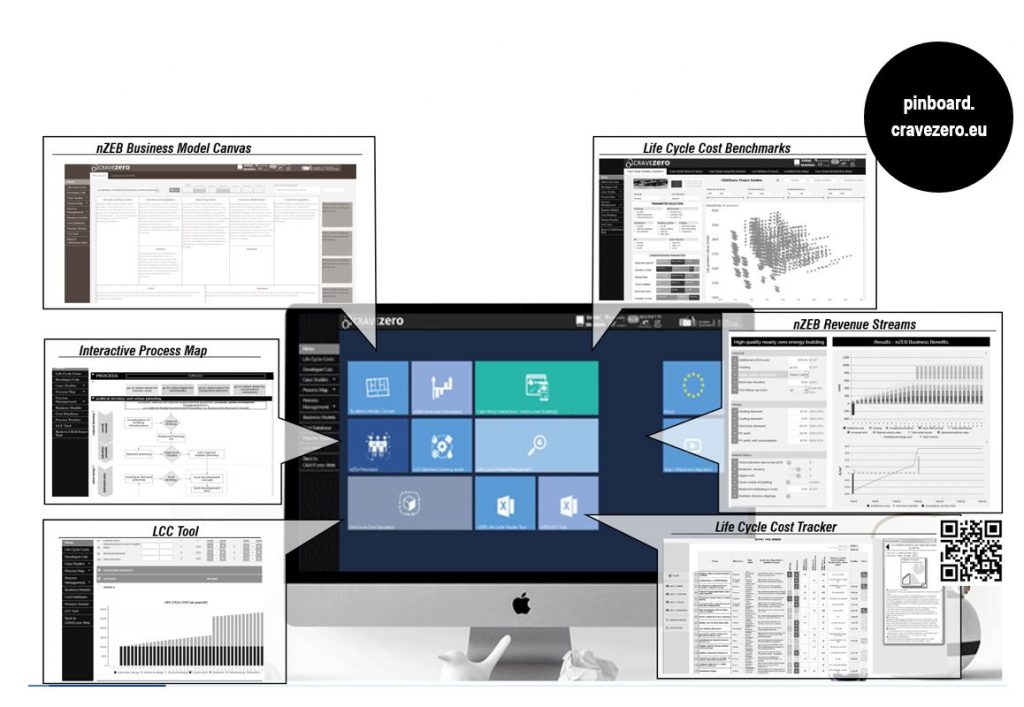
The CRAVEzero pinboard is a structured framework organizing all required information and tools to build:
- An effective low life cycle cost nZEB business model
- Reliable life cycle cost databases with cost reduction potentials in processes
- Technologies, methodologies, robust solutions and business models for low LCC nZEBs.
The outcomes of the CRAVEzero project have been collected and condensed into the so-called ‘pinboard’. The pinboard can be considered the backbone of CRAVEzero project, allowing changing the approach for the design and construction of new nZEBs through the solutions, ideas and tools developed. A brief overview of the pinboard’s main features is required to better understand the prototypical implementations carried out by project partners.

Figure: Pinboard landing page on CRAVEzero website (pinboard.cravezero.eu).
See the report about the ‘CRAVEzero pinboard’ for a complete description of the pinboard.
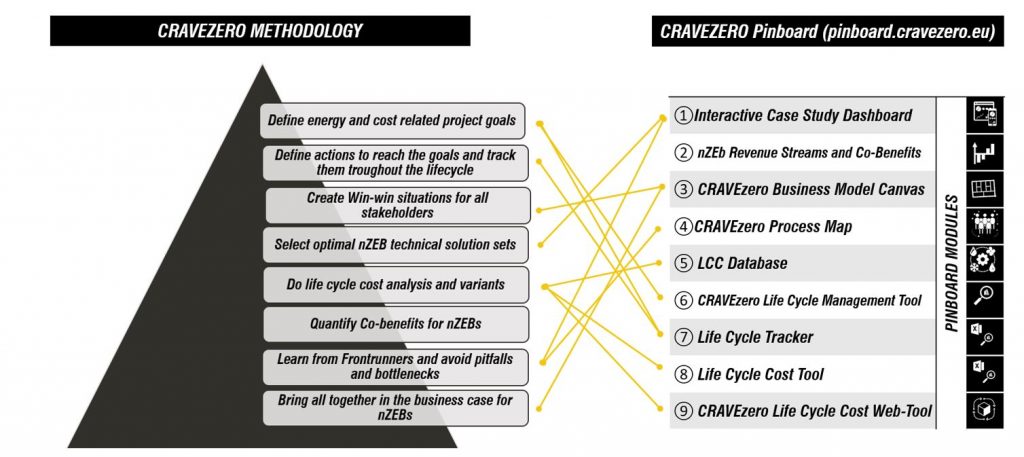
Figure : CRAVEzero method concerning the pinboard
All the steps mentioned in the CRAVEzero methodology have been translated into an interactive modular set of nine web-tools, free to use and modify on the CRAVEzero pinboard.
Business Model Canvas
A lean startup template for developing new or documenting your existing nZEB business models. The business model canvas is a tool which helps to understand a business model in a straightforward, structured way.
It offers the possibility to browse through existing business models or to create new ones. The business model repository collects 70+ existing nZEB business models, in which the life cycle phases are indicated. The information of each business model is displayed according to the Osterwalder Business Model Canvas structure: It is a visual chart with elements describing a company’s or product’s value proposition, infrastructure, customers and finances.
Within this canvas it is also possible to create a business model from scratch thanks to the Business Model Canvas creator.
Case-study dashboard – Frontrunner buildings
The idea of this interactive dashboard is to allow users of the pinboard to dig into the data and discover insights and look for optimal solutions based on the CRAVEzero case studies. The web-report is highly interactive and highly customizable. Within the dashboard, users can add and remove data, change visualization types, and apply filters to thousands of technical variants and life cycle costs.
Process Map
The Process Map is a process tool
that enables the project team to integrate additional tasks and actions for
achieving the nZEB standard into their own planning, construction and execution
routine. It gives an initial overview of the complexity and the possibilities
of influencing the planning and construction process to develop a nZEB. In the
interactive process map, stakeholders can display individual “nZEB specific
action items” (To Do’s) or see which tasks other project participants have, in
order to achieve a nZEB. The whole process is divided into the following
planning and construction steps: urban planning; planning; building
construction; utilization; end-of-life. Also action items and bottlenecks can
be displayed for the following stakeholders: owner/user; municipalities;
integrated planning team; construction companies.
Life Cycle Tracker
CRAVEzero Life Cycle Tracker is an easy to customize electronic document that can be adapted to the specific needs of any practice, team or project. It organizes the process of briefing, designing, constructing, maintaining, operating and using building projects into several key stages. It gives details of the tasks and outputs required at each stage, which may vary or overlap to suit specific project requirements. It is a web tool and downloadable spreadsheet, containing customizable tables allowing easy creation of the project roles, design responsibility matrix and multidisciplinary schedules of services.
Life Cycle Management
CRAVEzero Life Process Management tool is an online tool which allows tracking and managing a nZEB project throughout the whole life cycle.
Life cycle cost tool
A tool for the life cycle cost calculation was developed and it is available in two versions: a complete version with all functionalities and freedom to customize and a reduced online version, which permits to do a preliminary LCC calculation.The data collection, within the tool, is organized following as a base reference the LCC structure introduced by the standard ISO 15686-5:2017. Furthermore, the source used to structure the construction costs is the European Code of Measurement, elaborated by the European Committee of the Construction Economists. Regarding the analysis of maintenance costs of heating, ventilation, and air conditioning (HVAC) systems, this is based on standard values from EN 15459:2018, which provides yearly maintenance costs for each element, including operation, repair, and service, as a percentage of the initial construction cost. Lifespan for system replacement is also provided by the norm. According to the ISO 15686-5:2017 the LCC analysis, and it deals with the activities connected with the design, construction and operation of the building. End-of-life costs have not been implemented in the tool yet. The Whole Life Cost (WLC) includes also the non-construction cost (e.g. cost of land, enabling activities) and the needed fees for allowing the set-up of the building from the technical and administrative point of view.
CRAVEzero – The Role of life-cycle costs in NZEB projects
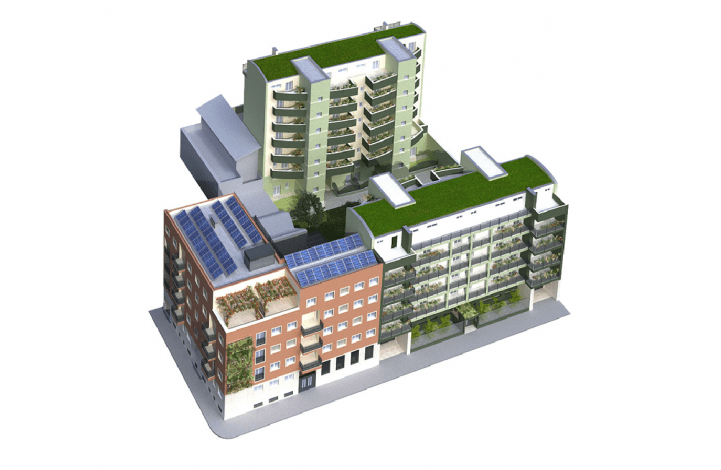
Submitted by Baerbel Epp on February 4, 2020 on solarthermalword.org
How much does it cost to construct, run and maintain a Nearly Zero Energy Building? What energy efficiency and renewable options could work best for a given project? Answering these and other questions is the aim of CRAVEzero.eu, a new, interactive online platform. It supports architects and planners during the design and construction process by offering a set of software tools to estimate how much money will be needed for a Nearly Zero Energy Building (NZEB) over its lifetime. One of the properties that have been analysed as part of CRAVEzero is Isola nel Verde, a block of flats in Milan, Italy (see image). Image: Isola nel Verde “We carefully examined the cost structure and planning processes of 12 NZEB demonstration projects in Austria, France, Italy and Sweden to identify a cost base for the purchase, maintenance and operation of different components, including heat recovery systems, solar thermal installations and building envelopes,“ said Tobias Weiss, who works as the project manager of CRAVEzero at AEE INTEC based in Austria. The lessons learned from implementing these showcase projects, which focus on multi-storey residential and office construction in Europe, have since been shared with the entire sector. “Using real-world data from these demonstration projects, we carried out calculations for half a million variants, which you can search for online by going to the Interactive Case Study Dashboard,“ explained Weiss. The dashboard can be found on the CRAVEzero Pinboard, a web page that is currently being beta-tested and includes a number of tools offering support for planners of NZEB projects.
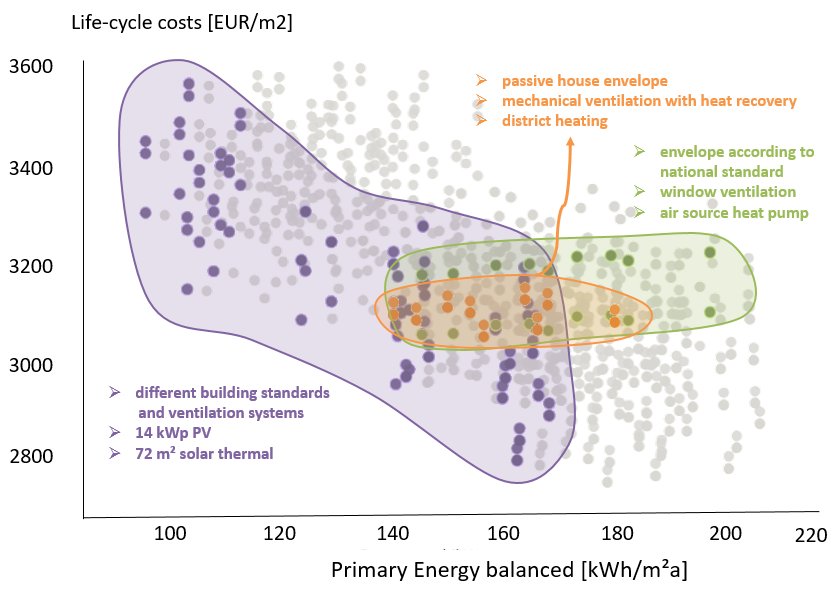
This chart shows the life-cycle costs of different variants for Isola nel Verde in Milan, Italy, in relation to their specific primary energy demand. Combinations which are subject to the same efficiency standards for building envelopes, heating and ventilation, and solar energy systems are highlighted in the same colour. For calculation purposes, it was assumed that loans would run for 25 years and carry 3 % interest at 2 % inflation and a nominal discount rate of 3 %. Source: CRAVEzero The chart above shows the life-cycle costs (LCC) of hundreds of variants for Isola nel Verde in Italy. Specific costs range from 2,800 to 3,600 EUR/m2 (factor: 1.3). The cost estimate for the actual building was 3,615 EUR/m2, split between 1,899 EUR/m2 (53 %) for the building itself and 1,716 EUR/m2 for its operation (energy, maintenance and similar). Regarding primary energy demand, some variants even differ by a factor of 2. If Isola nel Verde had been constructed in line with common building regulations, which require the addition of an air source heat pump (green dots) but no ventilation system, primary energy demand would have been somewhere between 140 kWh/m2 and 210 kWh/m2 a year. The most environmentally friendly variants include 72 m2 of solar collector area and a 14 kWp PV generator (purple dots) and reduces yearly primary energy demand over the entire lifetime of the building to about 100 kWh/m2. Dashboard for benchmarking project LCCs “Calculating LCC variants is therefore a vital step in the integrated planning process of zero-energy buildings. Else, you run the risk that architects and engineers optimise components with only their specific area in mind and lose sight of shared goals,” said Weiss. Variants including solar thermal systems (see the purple dots in the chart above) have the lowest life-cycle costs of all Isola nel Verde options. These systems may lead to a slight increase in the initial investment amount but will save annually increasing amounts of money because of rising energy costs over the 20-year lifetime of a collector. For example, in Europe, up to 50 % of the copper that is used as a key material to make solar thermal circuits can later be recycled. According to the European Copper Institute, recycling reduces energy consumption by up to 85 % compared to primary production. Dashboard users can filter by building envelope, efficiency standard and heating or air conditioning system to find variants. “A great plus of the dashboard is that it lets you compare your building project with the variants available online, so you can see where you stand regarding life-cycle costs, as well as heat and primary energy demand,” explained Weiss. Integrated design The Case Study Dashboard is one of several functions provided by the CRAVEzero Pinboard. Another website feature is the Interactive Process Map, which shows the design process of NZEBs. Integrated design is essential to their construction; in this context, integrated means engineers and architects work together closely to develop the most innovative and effective solution for a given project and monitor compliance with standards and practices during its implementation. Process diagrams are then used to help planners set out the responsibilities of each partner in the project, plus point out possible bottlenecks or weaknesses which have hampered previous endeavours.
Further information:
CRAVEzero project website: http://www.cravezero.eu
CRAVEzero Dashboard: https://www.cravezero.eu/pboard/Dashboard/DBInfo.htm
Interactive Process Map: https://www.cravezero.eu/pboard/PMap/ProcessMap.htm


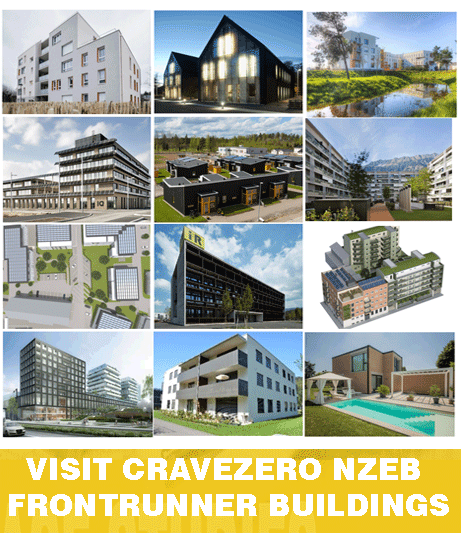
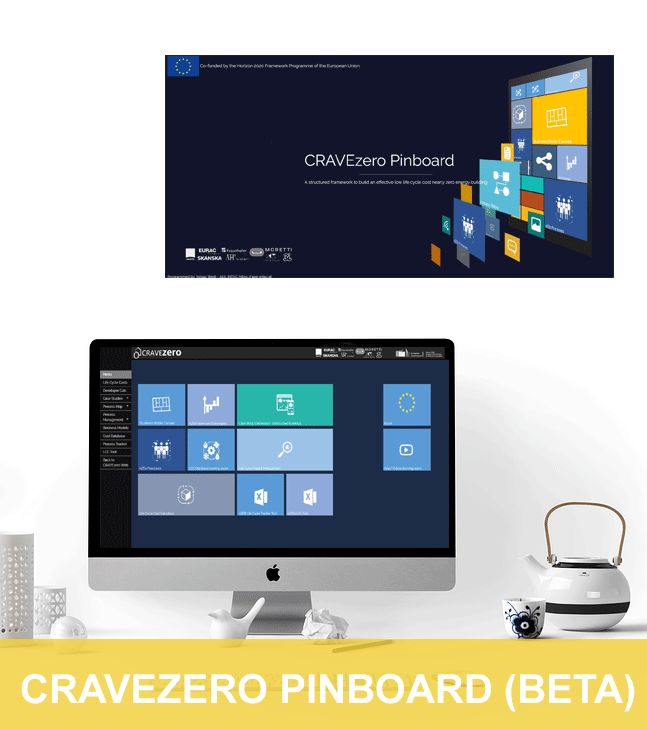
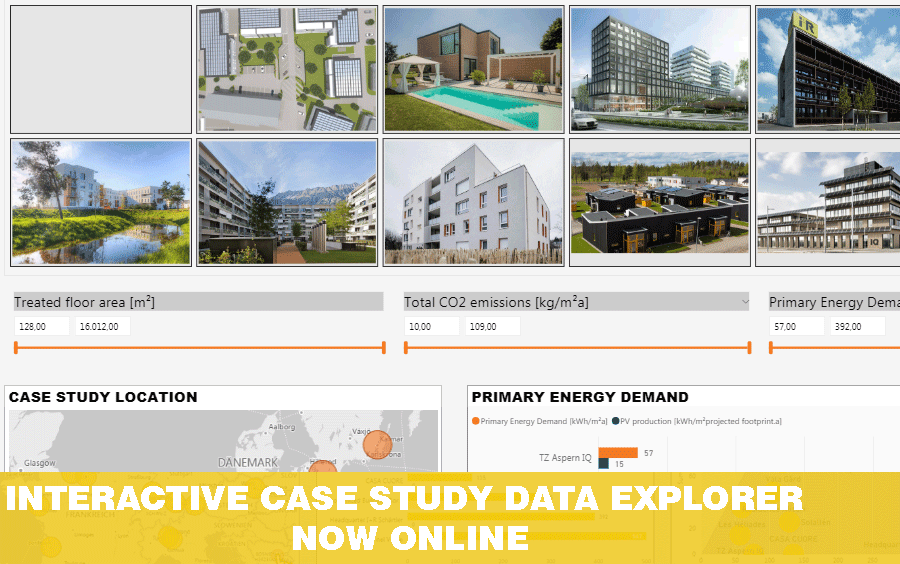
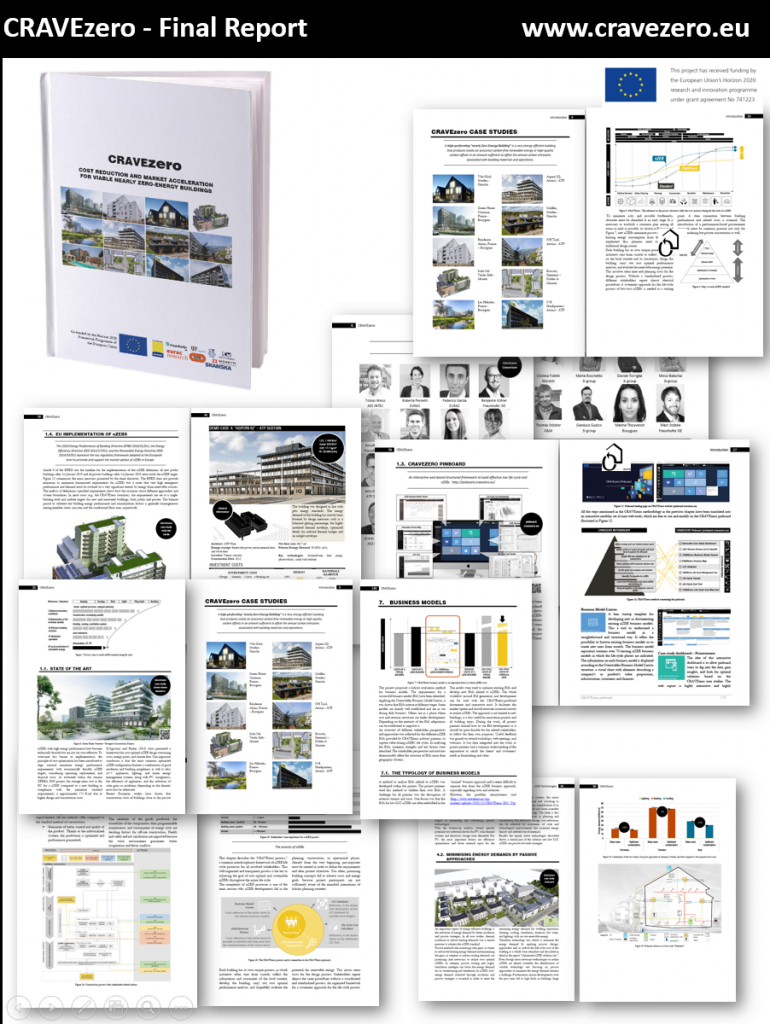

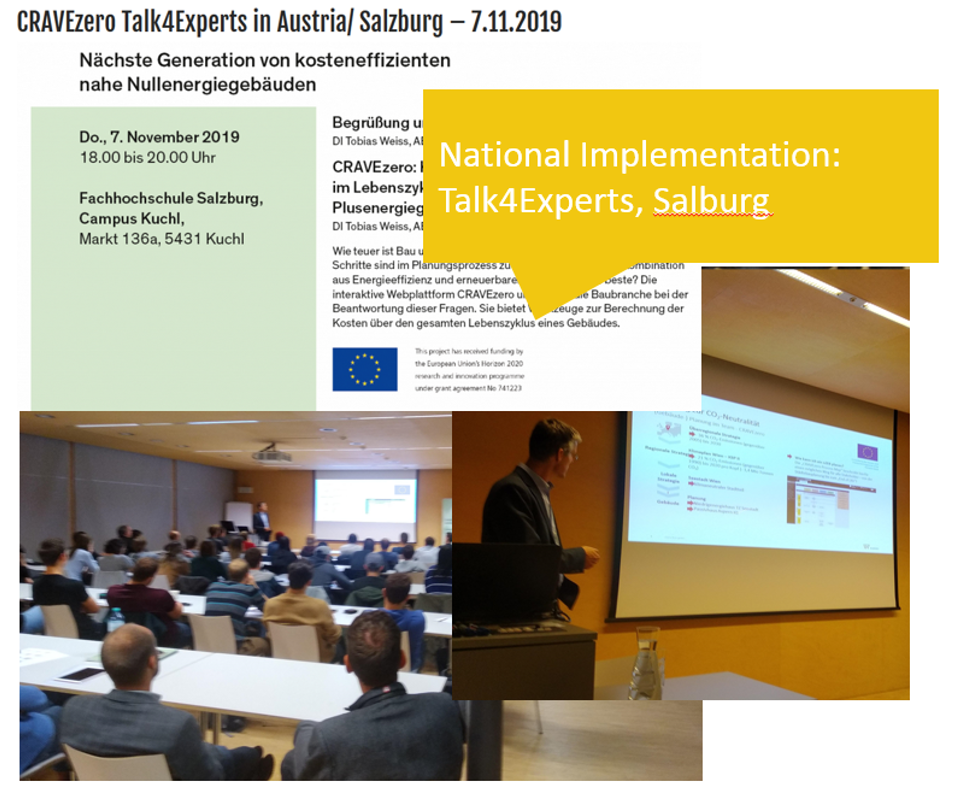
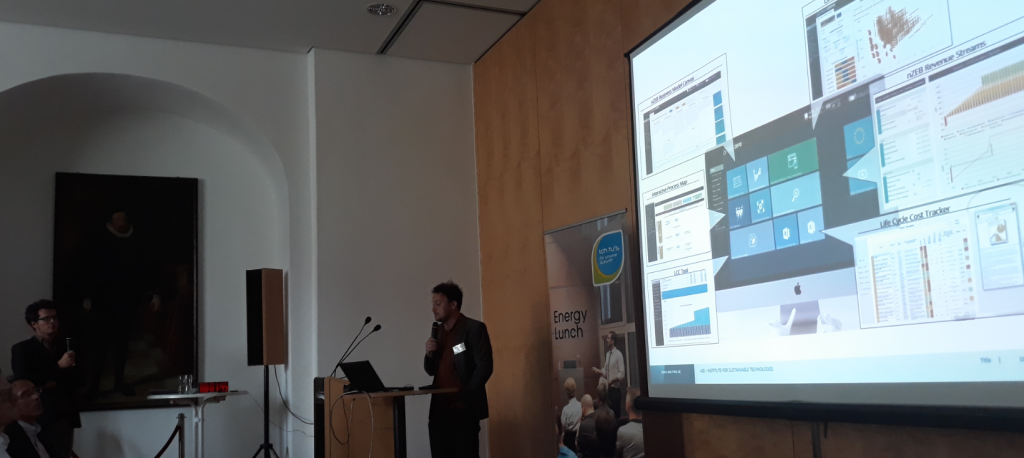
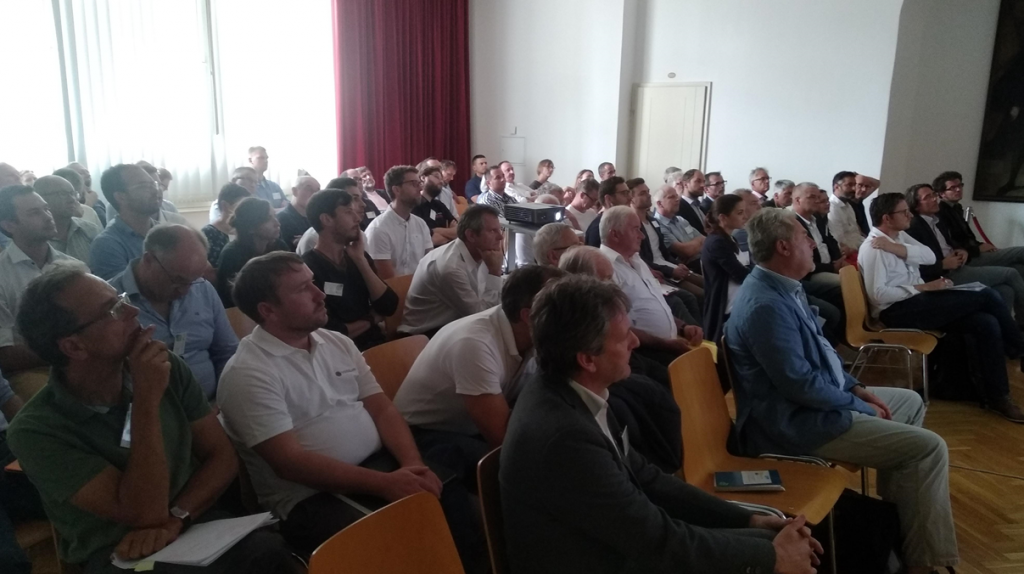

 Disclaimer
Disclaimer